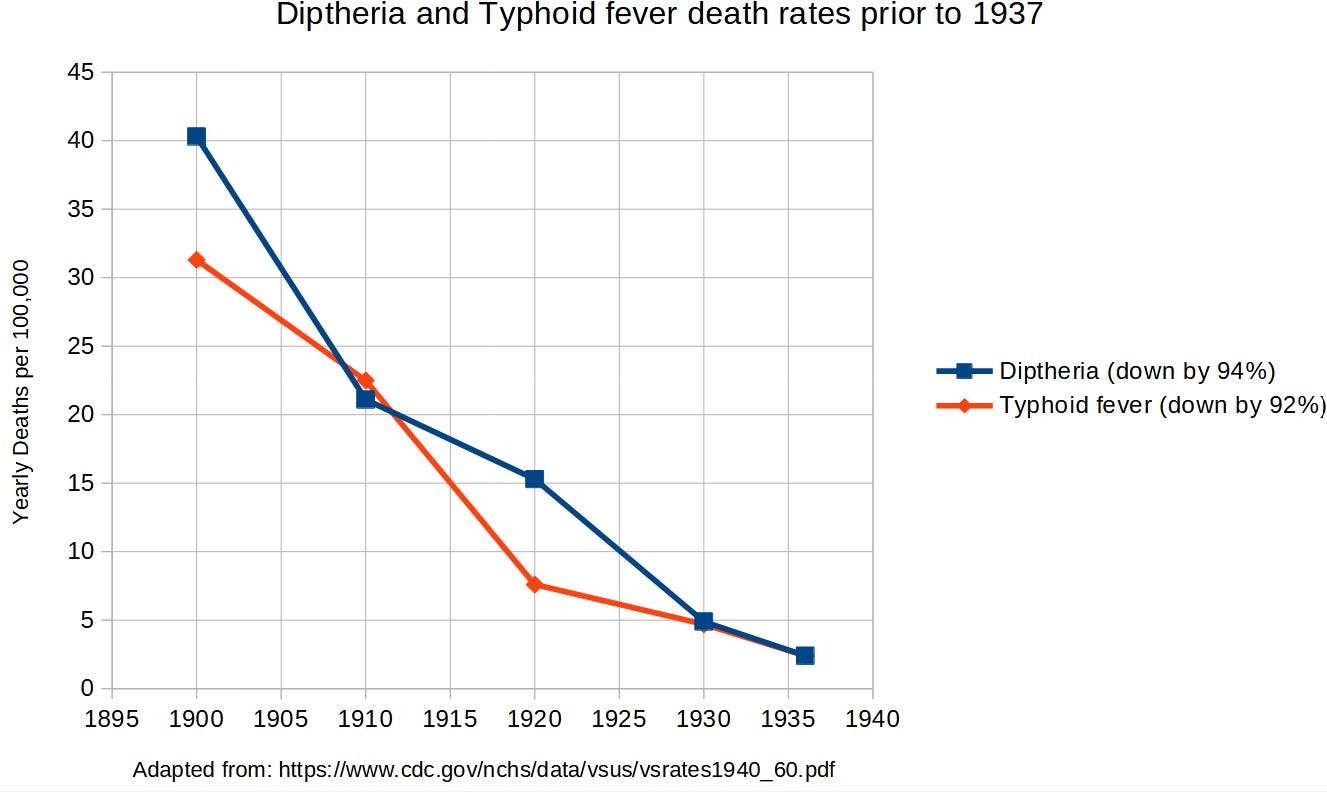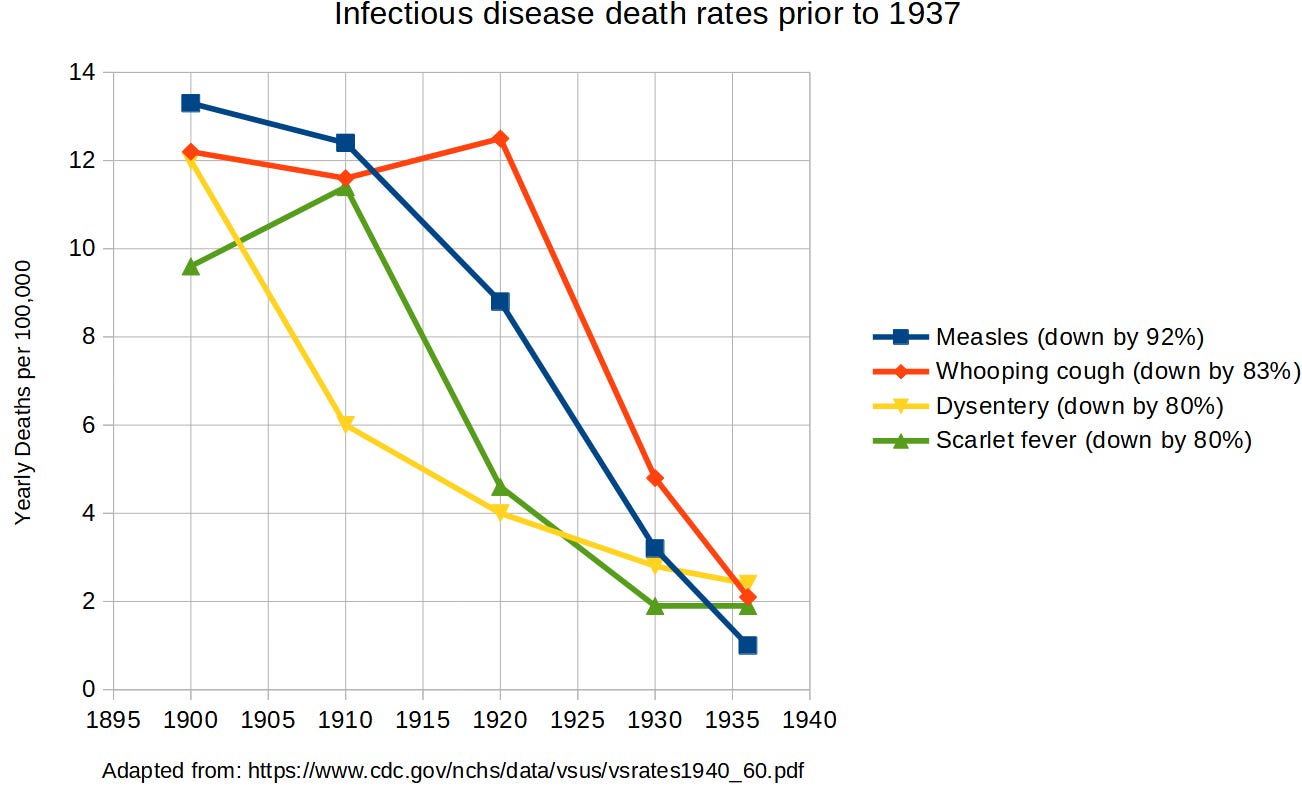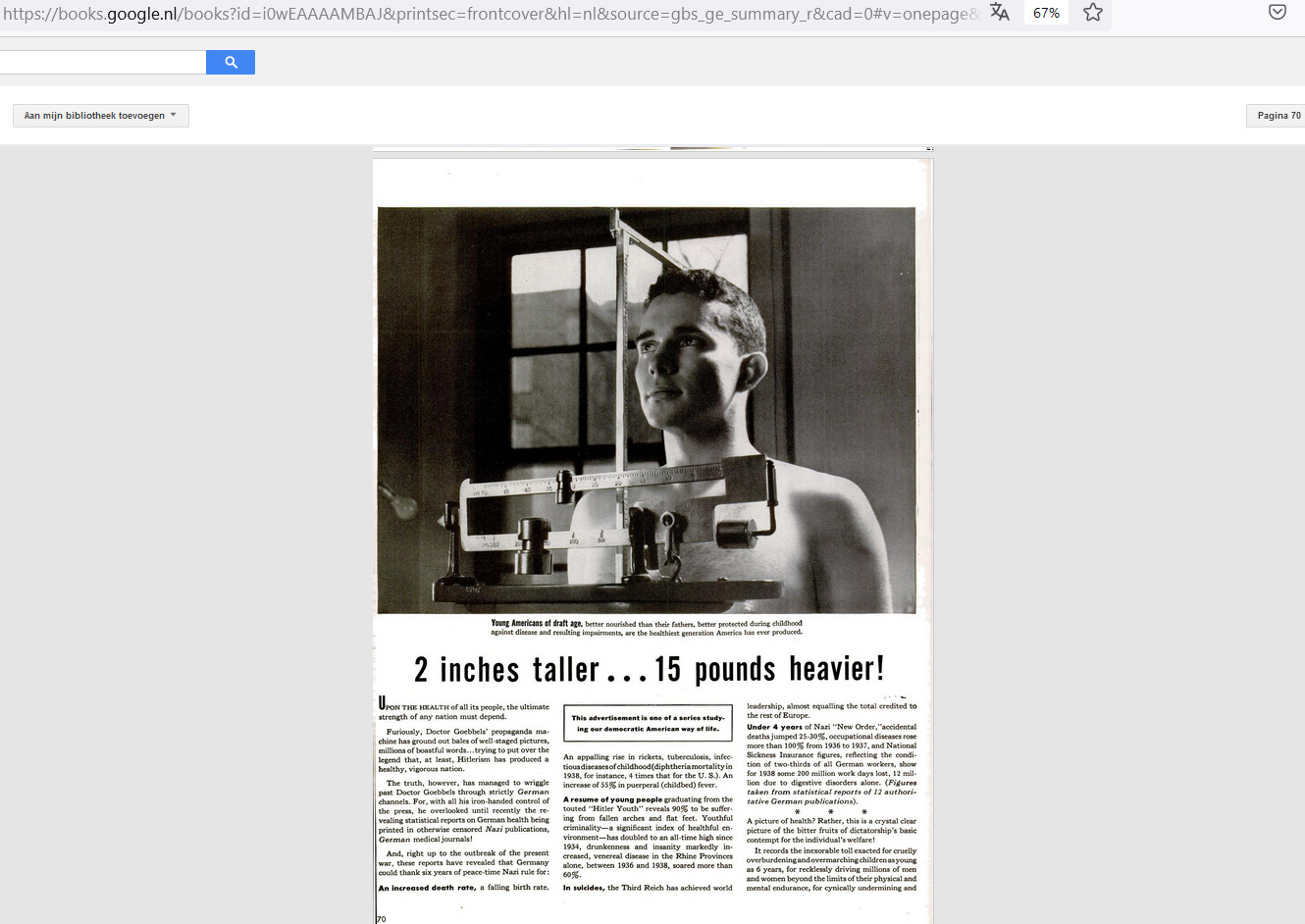Nutrition & Hygiene (Part 3)
Post #832
The last entry in this series is found here.
A natural experiment was performed in the USA from 1900 to 1936, an era before any mass production of any broad-spectrum anti-microbial. While an arsenic compound, Salvarsan, had been found useful for syphilis by 1909, it wasn’t broad-spectrum and it was dangerous to take arsenic into your body, limiting the widespread use of it.
While folk remedies like garlic were always somewhat effective, only when “sulfa drugs” (based on sulfonamide) became mass produced in 1937 did effective pharmaceutical drugs, per se, exist for infectious disease. But without any good drugs before 1937, infectious disease burdens were all down by at least 80% by then:
That’s at least 92% reduction prior to any good prescription drugs (prior to 1937). And here are other bacterial diseases, and also including the viral disease, measles:
By 1936 — the year before any good prescription drugs existed for these diseases — each and every one of them saw decreases in death rates of 80% or more. The reason for the decrease is nutritional, and the phenomenal increase in human nutrition during the first third of the twentieth century was a story in this 1941 issue of Life:
Only nutrition can make people “2 inches taller … and 15 pounds heavier.” The big change from 1900 to 1936 wasn’t the invention of new drugs to fight infectious disease, it was instead the result of improvements in nutrition.
Reference
[Google page viewer for 2 Jun 1941 issue of Life Magazine] — https://books.google.nl/books?id=i0wEAAAAMBAJ&hl=nl&source=gbs_all_issues_r&cad=1




